Coffee Guide: How to Brew An Espresso
February 08, 2023

Besides the important information found inside your espresso machine's manual, there are some general rules of thumb that you should keep in mind when extracting a double shot at home. Here is everything you need to know about brewing espressos (and how to get the most out of your brew.)
Defining Espresso
When shopping for coffee, it's important to understand the proper definition of espresso. The term "espresso" refers to a specific brewing method and the type of coffee suited for making espresso drinks. Espresso coffee is ground extremely fine and traditionally a darker roast. Nowadays, many baristas and coffee drinkers are also brewing espresso with light roasts, which requires some adjustments to your coffee grinder to get the ideal grind size and dosage. For more information on how a coffee's roast grade affects the grinding process, check out our article on the topic here.By definition, double shots of espresso are 2oz, and single shots are 1oz. These concentrated shots of coffee have a creamy, viscous texture formed from the high pressure applied during the extraction process. Espresso should also display a top layer of crema – a pale-colored layer of microbubbles formed by the blending of CO2 and the beans' natural oils.
Methods To Brewing
One cannot properly brew espresso without creating the right conditions. Typically, the only way to combine high heat and high pressure in such short periods of time is by using an espresso machine.Espresso machines today can come as "pump" machines (traditional manual machines) or automatic bean-to-cup machines. When it comes to pump machines, baristas have to dedicate more time and attention to the brewing process, including grind size, dosage, and extraction times, as opposed to bean-to-cup machines that require the simple press of a button. But regardless of which device you choose to invest in, there are still some steps that take place before and after extraction that every coffee fan should know.
Prepping for an Espresso
The first step to making an espresso is preheating your machine and ensuring that both your portafilter and group head are warmed up. The same applies to your coffee cup as well. Warm your mug with hot water so it can efficiently hold your beverage's ideal temperature.Once everything is warmed up and ready to go, dispense your coffee grounds into your portafilter basket. If you're working with pre-ground coffee, portion a dosage between 14-18g of grounds for a double shot. If you're grinding your own beans, ensure you achieve an even, ultra-fine grind as you portion your dosage. To guarantee accuracy and quality, use a digital scale like Lardera's scale and timer. This portable and rechargeable scale has a sensitivity of 0.1 seconds and 0.1 grams and can run for 10 hours per charge.

Once your coffee grounds are dispensed into your portafilter basket, tamp your coffee with firm pressure and ensure your packed grounds are evenly flat at the fill line. Wipe away any excess grounds and flush your group head for a few seconds to remove any leftover coffee from the previous extraction. It's now time to lock your filled and tamped portafilter into the group head and hit the brew button!

